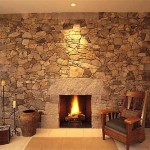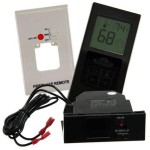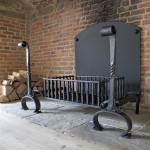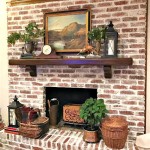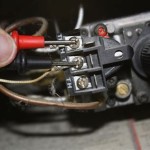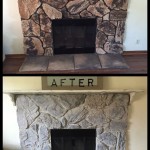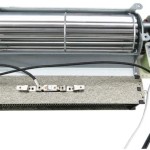Understanding Wood Burning Fireplace Stove Pipe
Wood burning fireplaces and stoves provide warmth and ambiance to homes, especially during colder months. A critical component of any wood burning system is the stove pipe, responsible for safely venting combustion byproducts, such as smoke, gases, and particulate matter, away from the living space. Selecting and maintaining the correct stove pipe is crucial for both safety and optimal heating efficiency. This article provides a comprehensive overview of wood burning fireplace stove pipes, covering types, installation practices, safety considerations, and maintenance requirements.
The primary function of a stove pipe is to create a draft, which pulls air into the firebox, fueling combustion and simultaneously expelling exhaust gases. A properly functioning stove pipe ensures the efficient removal of harmful emissions, preventing them from entering the home and posing health risks. It also directly impacts the stove's heating performance; an obstructed or improperly sized pipe can lead to poor draft, resulting in smoky fires and reduced heat output. Understanding the nuances of stove pipe selection and installation is therefore paramount for any wood burning appliance owner.
Types of Stove Pipe
Stove pipes are not a one-size-fits-all component. They are manufactured in different materials, gauges, and configurations to suit various stove types and installation scenarios. Choosing the right type is essential for safety and longevity. Common types include:
Single-Wall Stove Pipe: This is typically made from 24-gauge or 22-gauge steel. It is the most common and economical option for connecting a wood stove to a chimney. Single-wall pipes radiate heat effectively, contributing to room heating. However, they also get extremely hot and require significant clearance from combustible materials. Building codes often specify minimum clearance requirements, typically 18 inches, unless a heat shield is used. Single-wall pipe should only be used indoors, connecting the stove to the chimney.
Double-Wall Stove Pipe: Double-wall pipes offer improved safety and performance compared to single-wall options. They consist of two layers of steel with an air gap between them. This air gap acts as an insulator, reducing the surface temperature of the pipe. This allows for reduced clearance from combustible materials, often to as little as 6 inches, depending on the manufacturer and listing. Double-wall pipes are more expensive than single-wall pipes, but the reduced clearance requirements can be advantageous in certain installations, particularly where space is limited. They are also generally considered safer due to the lower surface temperatures.
Triple-Wall Stove Pipe: While less common than single or double-wall, triple-wall stove pipe offers the highest level of safety and insulation. It incorporates an additional layer of insulation, further reducing surface temperatures and clearance requirements. These pipes are typically used in installations where clearances are severely restricted or in specialized applications. Due to their enhanced insulation, they also contribute to improved draft performance and reduced creosote buildup. Their increased cost often makes them a less frequent choice unless specifically required by the installation environment.
Pellet Stove Pipe: Pellet stoves require specialized vent pipes designed specifically for their unique combustion characteristics. Pellet stove pipes are typically smaller in diameter than those used for wood stoves, reflecting the more efficient and cleaner burning nature of pellet stoves. They are often made from stainless steel and are designed to be airtight to prevent the leakage of carbon monoxide. These pipes are rated for lower temperatures than wood stove pipes.
The selection of stove pipe should always be based on the stove manufacturer's recommendations, local building codes, and the specific installation requirements of the home.
Installation Best Practices
Proper installation is paramount for the safe and efficient operation of a wood burning appliance. Incorrectly installed stove pipes can lead to dangerous situations, including chimney fires and carbon monoxide poisoning. Following industry best practices and local building codes is essential throughout the installation process.
Clearance to Combustibles: Maintaining adequate clearance between the stove pipe and combustible materials is crucial to prevent fires. As mentioned previously, single-wall pipes typically require 18 inches of clearance, while double-wall pipes may allow for as little as 6 inches. These clearances can be reduced further with the addition of heat shields. Always consult the stove and stove pipe manufacturer's instructions and local building codes to determine the required clearances for your specific installation. Combustible materials include wood framing, drywall, furniture, and curtains.
Proper Pipe Slope and Support: The stove pipe should be installed with a slight upward slope towards the chimney. This slope promotes a natural draft and helps prevent creosote from running back into the stove. A minimum slope of ¼ inch per foot is generally recommended. The pipe must also be adequately supported to prevent sagging or separation at the joints. Use pipe straps or other approved supports to secure the pipe to the wall or ceiling at regular intervals, typically every few feet.
Secure Pipe Connections: All stove pipe connections must be securely fastened to prevent leaks. Sections of pipe should be crimped on the male end and inserted into the uncrimped end of the adjacent section. Each connection should be secured with at least three sheet metal screws. Ensure that the screws penetrate both layers of the pipe. Use high-temperature sealant at the joints to create an airtight seal, further preventing the escape of flue gases. A poorly sealed system can allow carbon monoxide to leak into the living space.
Chimney Connection: The stove pipe must be properly connected to the chimney. Use a properly sized thimble to pass the pipe through the wall or ceiling and into the chimney flue. The thimble should be made of non-combustible material and should fit snugly around the stove pipe. The connection between the stove pipe and the chimney liner should be sealed with high-temperature sealant to prevent leaks. Ideally, the stove pipe should connect directly to a dedicated chimney flue, rather than sharing a flue with other appliances. Sharing flues can lead to backdrafting and reduced efficiency.
Professional Inspection: After installation, it is highly recommended to have the entire system inspected by a qualified professional chimney sweep or installer. They can verify that the installation meets all applicable codes and standards and identify any potential safety hazards. A professional inspection provides assurance that the system is operating safely and efficiently.
Safety Considerations and Maintenance
Operating a wood burning appliance safely requires ongoing vigilance and proper maintenance. Neglecting safety precautions can lead to serious consequences, including chimney fires, carbon monoxide poisoning, and property damage. Regular inspection and cleaning are essential for maintaining a safe and efficient heating system.
Creosote Buildup: Creosote is a flammable byproduct of incomplete combustion that accumulates inside the stove pipe and chimney flue. It is a dark, oily or crusty substance that can ignite and cause a dangerous chimney fire. The rate of creosote buildup depends on factors such as the type of wood burned, the burning temperature, and the efficiency of the stove. Burning unseasoned wood, operating the stove at low temperatures, and insufficient air supply can all contribute to increased creosote formation.
Regular Inspections and Cleaning: The stove pipe and chimney should be inspected regularly for creosote buildup. A professional chimney sweep should be hired to clean the chimney at least once a year, or more frequently if heavy creosote buildup is observed. During the cleaning process, the chimney sweep will remove creosote from the stove pipe, chimney flue, and smoke chamber. They will also inspect the system for any signs of damage or deterioration. Regular cleaning helps prevent chimney fires and ensures the continued safe operation of the appliance.
Carbon Monoxide Detection: Carbon monoxide (CO) is a colorless, odorless, and deadly gas produced by incomplete combustion. It is essential to install carbon monoxide detectors in your home, especially near sleeping areas, to provide early warning of CO leaks. Test the detectors regularly to ensure they are functioning properly. If the alarm sounds, evacuate the house immediately and call emergency services. Symptoms of carbon monoxide poisoning include headache, dizziness, nausea, and confusion.
Proper Wood Selection: Burning seasoned firewood is crucial for efficient and safe operation. Seasoned wood has a moisture content of 20% or less. It burns hotter and cleaner than unseasoned wood, producing less smoke and creosote. Avoid burning treated lumber, painted wood, or trash, as these materials can release harmful chemicals into the air and damage the stove and chimney. Store firewood in a dry, well-ventilated area to promote proper seasoning.
Stove Operation: Operate the stove according to the manufacturer's instructions. Avoid overloading the firebox, as this can lead to incomplete combustion and increased creosote buildup. Do not use flammable liquids to start the fire. Ensure that the stove door is properly sealed to prevent air leaks. Maintain a sufficient air supply to the fire to promote complete combustion and reduce smoke production.
By adhering to these safety guidelines and maintenance practices, homeowners can enjoy the warmth and ambiance of a wood burning fireplace or stove while minimizing the risks associated with wood burning appliances.

Chimney And Venting Pipe Guide Fireplaces Direct Learning Center

What Accessories And Parts Do I Need To Fit A Wood Burning Stove Supermarket

Can You Install A Wood Burning Stove In An Existing Fireplace

What Is A Freestanding Wood Stove Fireplace Service Experts

Wood Burning Stove Chimney Installation

What S Best A Fireplace Stove Or Insert We Love Fire

Clearances To Combustible Materials For Fireplaces Stove Pipe

How To Measure A Stove Pipe Ehow

Chimney Thimbles Passing Safely Through A Combustible Wall

Barry Stone Wood Stove Too Close To Paneling

